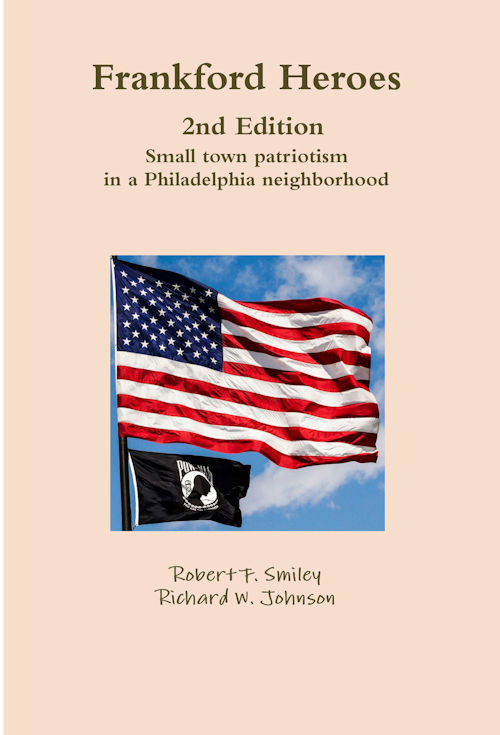When I was a teenager in the 1960’s it was called Wally’s Bar (Bridge & Jackson Sts.) – until the late 1980’s. We even made up a little song about it:
“I was drunk last night; I was drunk the night before; but tonight I’m gonna get drunk; like I never got drunk before ….”
In the about 1983 Wally Wyszynski wanted $90,000 for the place. When I said I could raise the money and buy it – he quickly raised the price to $130,000 to prevent me from buying it.
Soon thereafter, he got cancer but he was still serving the 20 cent beers while he was wearing a colostomy bag – and he still wanted the $130,000 which I could not raise.
I told my friends that Wally wanted to go out wearing his boots. He did.
I’ll miss Wally & his bar. There were many great games of Horse Collar 21 & 51 played on that table with the old timers and the 20 cent beer.
Wally died and his wife ran it a few years and ended up selling Wally’s Bar for $80,000 to a couple of partners (a woman & a man). The new name was Uncle Jacks.
Uncle Jack wanted a young crowd – the old geezers had to go, but how were they going to do that? Most of the time the old timers would beat us young guys on the shuffle-board for a beer and practically drink for free. We had to out drink the old guys to get them off the shuffle board, because we almost never won a game.
The first thing Uncle Jack did was to scrap the old wooden shuffle board, as it was a game played over 20 cent beers & kept the old timers drinking. They wanted to push the more expensive 12 oz. bottled beer; and not sell 6 oz. glasses of tap beer.
The second thing they did was tear out walls and removed the kitchen as to make the place bigger. It soon had no kitchen, but did have some pool tables & dart boards.
One day – An odd thing happened.
The woman partner in Uncle Jack’s loved to gab on the phone, but it was one of those old cheap cordless phones.
My two sisters lived almost directly across the street and my one sister is legally blind and has nothing better to do but to listen to a police scanner, which by accident picked up the phone calls from the bar being transmitted over the airwaves.
Anyway my sister hears her telling the story that while demolishing the kitchen wall, they found over $80,000 that Wally, throughout his lifetime had saved and hid this money in the wall.
Wally died and never told the old Lady about the money, or perhaps it was there from before the great Depression and Wally did not know.
My sister tells me the money story, and so I went into the bar and had a couple of rounds to loosen up. I’m a bit pissey & salty about the shuffle board removal and I feel like having some fun without the board.
I called the owner over and said to her that if she would pour me a free beer I would giver her a hot tip.
She said: NO! I said “OK, how about a 20 cent beer and I’ll giver you some important information.”
Well she was kind of nasty and told me that “prices were not negotiable, and that if I could not afford to pay for a beer to just get the hell out.”
I told he that I was not her enemy and just trying to help her by passing her some information that I was told.
She said: “What information?”
I said “that anyone who just found $80,000 in the wall could afford to pour me a 20 cent beer.”
She was changing all kind of colors and I think her eyes were bugging out of her head like Jackie Gleason (the Honeymooners).
Well anyway, about that time I am cracking up & giggling. I really did not want another beer.
I said I would give her “some free advice.”
I said “that everyone in the neighborhood knew about the money.” I said “it was being picked up on every AM radio in the neighborhood, and now that she did have so much new found wealth, that she should not be so cheap when buying a new phone.”
That was it!!! She threw me out!
I was Flagged for Life!!!!
Not much latter, her and her partner had a falling out. He stole all the new found money & her new cordless phone and ran away. She went back to talking on the old cheap phone – so my sister says.
She ended up selling the place to a couple brothers who were wanna be gangsters or they were roofers or something for $130,000.
The new owners changed the name to Cappy’s Cafe.
After many fights, lawsuits & people getting assaulted & broken jaws – they sold the place, and next it became known as Minnow’s bar.
At Minnow’s there was a shooting and they were closed down. They just reopened as Natasha’s Caribbean Cafe (no liquor).
Oddly, it has (an illegal) cell phone tower on the roof broadcasting telephone calls to everyone.
I never went back.
J.M.







